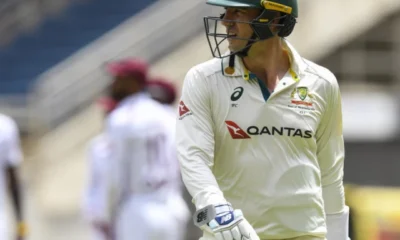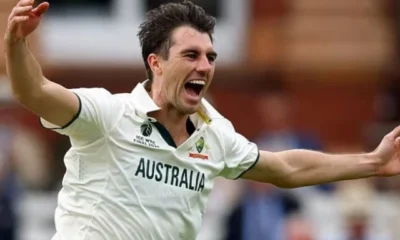Sports
Labuschagne slams another big century to send Ashes message | The Express Tribune
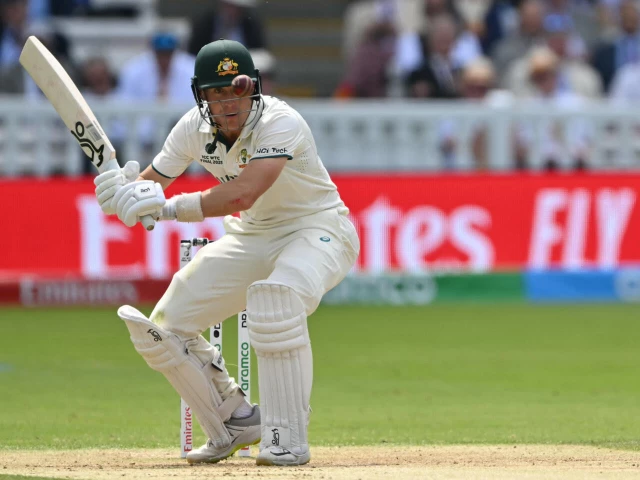
The Queensland batter’s red-hot form has reignited his push for a return to Australia’s Test squad
Australia’s Marnus Labuschagne has hit four centuries in five innings in the lead up to the Ashes. PHOTO: AFP
SYDNEY:
Run-hungry Marnus Labuschagne slammed his fourth century in five innings Thursday to make an emphatic case to be in Australia’s side for the opening Ashes Test against England.
The Queensland captain was dropped ahead of Australia’s mid-year Test tour of the West Indies after an extended lean spell.
But he has come roaring back to stake his claim to be part of the team that pads up in Perth on November 21.
Batting at three, he crunched 159 off 197 balls against South Australia, while Test opener Usman Khawaja hit a composed 46.
Labuschagne’s ton backed up the 160 he made in the opening Sheffield Shield round against Tasmania. He has also blitzed two 50-over centuries this season.
The 31-year-old opened with Khawaja in June’s losing World Test Championship final against South Africa at Lord’s.
But a growing chorus of former greats, led by David Warner and Matthew Hayden, are adamant he should revert to his usual spot at number three.
That would mean all-rounder Cameron Green shifts back to six and Beau Webster misses out in Perth, with the question of who opens with Khawaja still to be resolved.
Incumbent opener Sam Konstas’s quest to retain his spot has not gone well.
After a forgettable West Indies series, the 20-year-old was dismissed for a four-ball duck playing for New South Wales against Victoria on Wednesday.
He made only four and 14 against Western Australia last week, leaving selectors with plenty to ponder.
Sports
Panthers reach 7 wins for first time since 2022 with upset victory over Rams
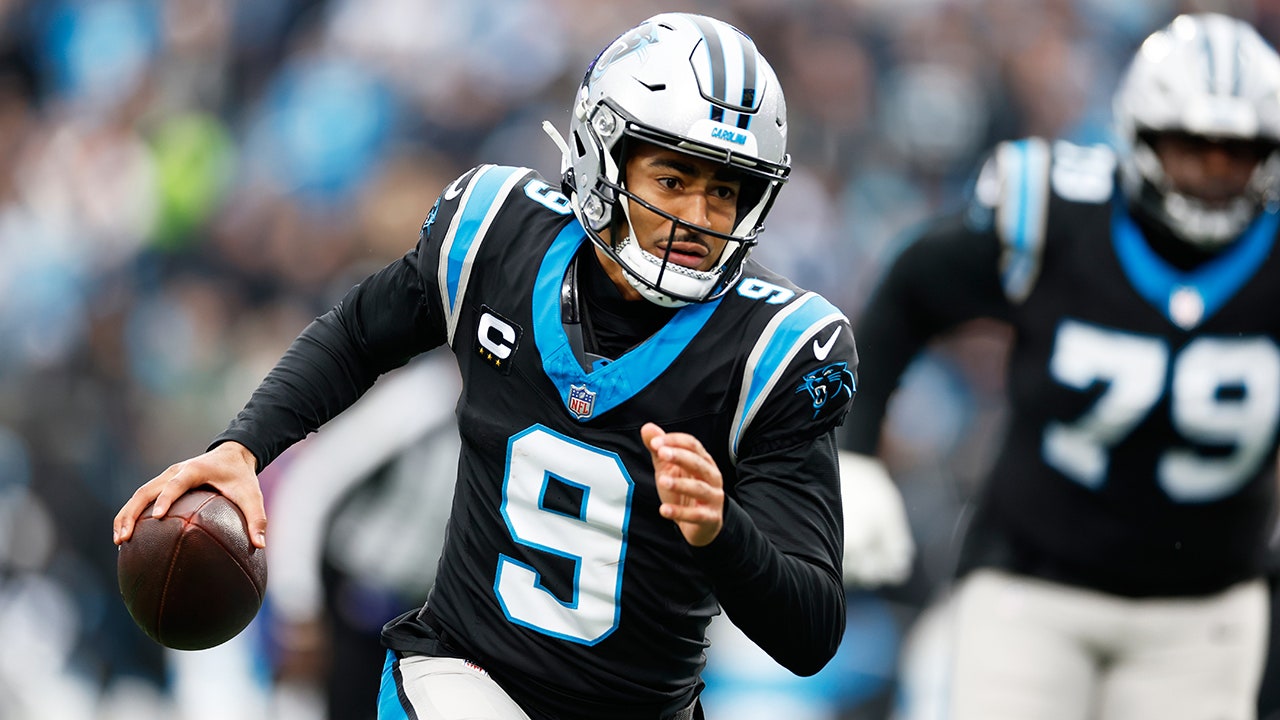
NEWYou can now listen to Fox News articles!
The Carolina Panthers created havoc for the Los Angeles Rams and received a boost from the sloppy weather as they defeated the best team in the NFC, 31-28.
Carolina notched its seventh win of the year. It’s the first time they have won at least seven games since the 2022 season when Matt Rhule, and eventually Steve Wilks, were at the helm. The Panthers also snapped the Rams’ six-game winning streak.
CLICK HERE FOR MORE SPORTS COVERAGE ON FOXNEWS.COM
Carolina Panthers quarterback Bryce Young runs against the Los Angeles Rams during the first half of an NFL football game, Sunday, Nov. 30, 2025, in Charlotte, North Carolina (Rusty Jones/AP Photo)
Rams quarterback Matthew Stafford entered the game as the NFL MVP favorite. It seemed like he was going to have a big game as he led the team down for a touchdown on the opening drive. At the time, it was his 28th touchdown pass without an interception, which broke an NFL record.
The good vibes didn’t last long as Stafford threw an interception on his next drive and later had a pick six to Panthers cornerback Mike Jackson. The Panthers’ defense then forced Stafford to fumble the ball on the Rams’ final drive, which sunk any hopes of them coming back to force overtime or win the game.
Panthers quarterback Bryce Young was 15-of-20 with 206 passing yards and three touchdown passes. He found rookie wide receiver Tetairoa McMillan for a 43-yard go-ahead touchdown with 6:34 left in the game. It was McMillan’s only catch of the game.

Carolina Panthers safety Nick Scott celebrates after intercepting a pass against the Los Angeles Rams during the first half of an NFL football game, Sunday, Nov. 30, 2025, in Charlotte, North Carolina. (Jacob Kupferman/AP Photo)
BUCS’ BAKER MAYFIELD FINDS 320-POUND LINEMAN FOR TOUCHDOWN PASS VS CARDINALS
Carolina’s Jalen Coker had four catches for 74 yards and a touchdown. Running back Chuba Hubbard had two catches for 41 yards and a touchdown. He also added 83 yards on the ground on 17 carries.
Stafford finished 18-of-28 with 243 passing yards and two touchdown passes. Both touchdowns were to Davante Adams, who finished with four catches for 58 yards.
The Panthers’ (7-6) win kept them in contention for the NFC South lead. The Tampa Bay Buccaneers have a higher winning percentage after their win over the Arizona Cardinals, moving to 7-5.
Bundle FOX One and FOX Nation to stream the entire FOX Nation library, plus live FOX News, Sports, and Entertainment at our lowest price of the year. The offer ends on Jan. 4, 2026. (Fox One; Fox Nation)
CLICK HERE TO DOWNLOAD THE FOX NEWS APP
The Rams’ grip on the conference was loosened. The loss meant the Chicago Bears have the best record in the NFC. Chicago defeated the Philadelphia Eagles on Black Friday.
Follow Fox News Digital’s sports coverage on X and subscribe to the Fox News Sports Huddle newsletter.
Sports
Lane Kiffin chooses LSU following days of drama
Kiffin became a hovering theme of the latter part of the college football season as his future at Mississippi became uncertain.
Source link
Sports
Women’s College Volleyball Bracketology: Top seedings, bracket watch and more
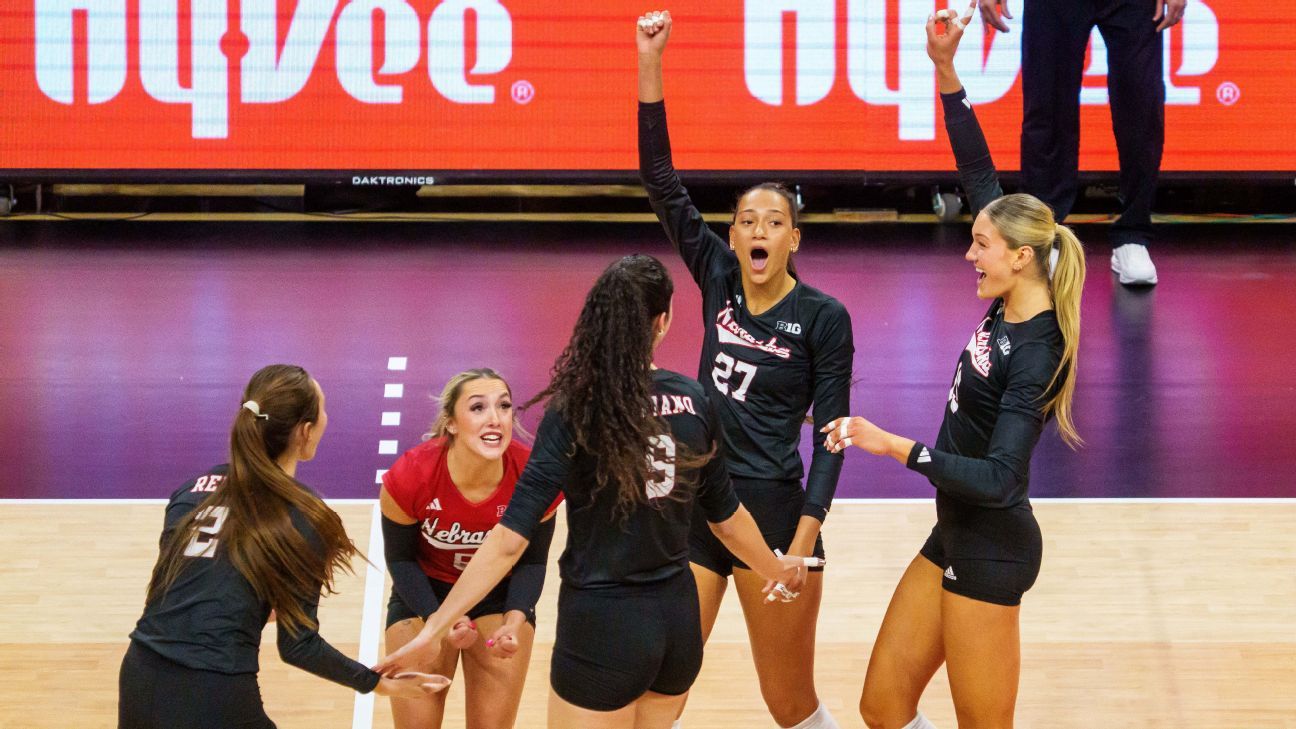
That’s a wrap on the regular season. All 31 automatic bids have been decided. Next up is the Selection Show on Sunday at 6 p.m. ET on ESPN where the other 33 at-large teams along with the seeding will be revealed.
Volleyball seeds the top-eight teams in each region and the top four serve as first- and second-round hosts. The rest of the bracket is filled out to balance it competitively and geographically. The highest remaining seeds also host the regionals, and the 2025 Final Four is in Kansas City, Missouri, on Dec. 18 with the finals on Dec. 21.

Bracket watch
Pittsburgh’s win over Louisville, although much closer than the sweep would indicate, was still convincing enough to push the Panthers onto the top line as the final No. 1 seed. The other three top seeds — Nebraska, Kentucky and Texas — should be easy for the committee. The big discussion and decision-making will likely center around which teams slot as No. 2 seeds and which ones falls on the No. 3 line. That group includes teams such as Arizona State, Stanford, Louisville, Creighton, SMU, Wisconsin and Texas A&M with résumés that are so close; differentiating them won’t be easy.
The final spots for the right to host the first and second rounds will also take some time. Miami and USC seem to have played their way into the top 16 with good finishes to the regular season. Indiana slipped a bit down the stretch. The Hoosiers might just hold onto a spot in the top 16.
Top seedings
No. 1 seeds: Nebraska, Kentucky, Texas, Pittsburgh
No. 2 seeds: Arizona State, Texas A&M, Creighton, SMU
No. 3 seeds: Stanford, Wisconsin, Louisville, Purdue
No. 4 seeds: Miami, Minnesota, USC, Indiana
No. 5 seeds: Kansas, BYU, Baylor, Tennessee
No. 6 seeds: TCU, Kansas State, Colorado, Iowa State
No. 7 seeds: Penn State, UTEP, Western Kentucky, Northern Iowa
No. 8 seeds: Marquette, North Carolina, Florida, San Diego
Rest of the field (alphabetical): American, Arizona, Arkansas State, Campbell, UCLA, Cal Poly, Central Arkansas, Coppin State, Eastern Illinois, Fairfield, Florida A&M, Georgia Tech, High Point, Long Island, Loyola-Chicago, Maryland-Baltimore County, Northern Colorado, Princeton, Rice, St. Thomas, South Dakota State, South Florida, Stephen F. Austin, Toledo, Tulsa, Utah State, Utah Valley, Villanova, Western Kentucky, Wofford, Wright State, Xavier
(The rest of the field teams wouldn’t be seeded)
Bubble watch
The biggest change on the bubble in the season’s final weekend was Arizona playing itself into the field with two wins. The Wildcats beat Cincinnati in four sets Saturday in a match that became a de facto play-in game. The Bearcats’ two losses over the past three days were backbreaking. Oregon picked up a pair of wins, but beating Rutgers and Maryland weren’t enough to elevate the Ducks, who lack a significant nonconference victory and didn’t play the nonconference schedule of South Florida.
Last Four In: Georgia Tech, Villanova, Arizona, South Florida
First Four Out: Oregon, Cincinnati, Dayton, Missouri
Next Four Out: Auburn, Florida State, Pepperdine, James Madison
Conference breakdown
Big 12: 8
Big Ten: 8
ACC: 7
SEC: 5
Big East: 4
American: 3
CUSA: 2
Summit: 2
-

 Sports7 days ago
Sports7 days agoWATCH: Ronaldo scores spectacular bicycle kick
-

 Entertainment7 days ago
Entertainment7 days agoWelcome to Derry’ episode 5 delivers shocking twist
-

 Politics7 days ago
Politics7 days agoWashington and Kyiv Stress Any Peace Deal Must Fully Respect Ukraine’s Sovereignty
-

 Business7 days ago
Business7 days agoKey economic data and trends that will shape Rachel Reeves’ Budget
-

 Tech5 days ago
Tech5 days agoWake Up—the Best Black Friday Mattress Sales Are Here
-

 Fashion7 days ago
Fashion7 days agoCanada’s Lululemon unveils team Canada kit for Milano Cortina 2026
-

 Tech5 days ago
Tech5 days agoThe Alienware Aurora Gaming Desktop Punches Above Its Weight
-

 Politics7 days ago
Politics7 days ago53,000 Sikhs vote in Ottawa Khalistan Referendum amid Carney-Modi trade talks scrutiny




